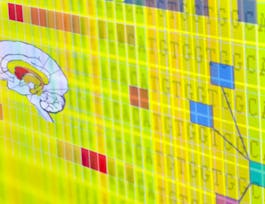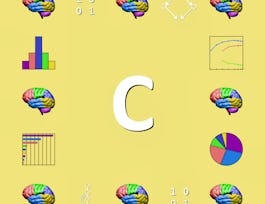Neurohacking describes how to use the R programming language (https://cran.r-project.org/) and its associated package to perform manipulation, processing, and analysis of neuroimaging data. We focus on publicly-available structural magnetic resonance imaging (MRI). We discuss concepts such as inhomogeneity correction, image registration, and image visualization.



Introduction to Neurohacking In R
This course is part of Neuroscience and Neuroimaging Specialization



Instructors: Dr. Elizabeth Sweeney
Sponsored by Coursera Learning Team
24,252 already enrolled
(306 reviews)
Skills you'll gain
Details to know

Add to your LinkedIn profile
26 assignments
See how employees at top companies are mastering in-demand skills

Build your subject-matter expertise
- Learn new concepts from industry experts
- Gain a foundational understanding of a subject or tool
- Develop job-relevant skills with hands-on projects
- Earn a shareable career certificate


Earn a career certificate
Add this credential to your LinkedIn profile, resume, or CV
Share it on social media and in your performance review

There are 4 modules in this course
What's included
3 videos1 reading1 assignment
In this section, we will discuss different formats that brain images come in, as well as some of the commonly done magnetic resonance imaging (MRI) scans.
What's included
7 videos6 assignments
In this section, we will discuss the steps done to process brain MRI data. We will discuss inhomogeneity correction, brain extraction or skull stripping, and various image registration techniques.
What's included
9 videos9 assignments
In this section, we will discuss the different types of registration and how one would go through processing a multi-sequence MRI scan, as well as wrapper functions that make the process much easier. We also cover interactive exploration of brain image data and tissue-level (white/gray matter and cerebrospinal fluid (CSF)) segmentation from a T1-weighted image.
What's included
11 videos1 reading10 assignments
Instructors

Offered by
Why people choose Coursera for their career




Learner reviews
306 reviews
- 5 stars
70.91%
- 4 stars
22.22%
- 3 stars
4.24%
- 2 stars
1.30%
- 1 star
1.30%
Showing 3 of 306
Reviewed on Sep 3, 2016
An excellent introduction to neuroimaging analysis! Tank you.
Reviewed on Feb 8, 2017
I like that this course goes through most necessary steps, my only suggest would be to have one additional week where you go through everything all together, and then do some simple group analysis.
Reviewed on Apr 7, 2020
Thanks for the course. It was a nice course with good explanation. I enjoyed learning.
Recommended if you're interested in Data Science

University of Toronto

Johns Hopkins University

University of Colorado System

Johns Hopkins University

Open new doors with Coursera Plus
Unlimited access to 10,000+ world-class courses, hands-on projects, and job-ready certificate programs - all included in your subscription
Advance your career with an online degree
Earn a degree from world-class universities - 100% online
Join over 3,400 global companies that choose Coursera for Business
Upskill your employees to excel in the digital economy


